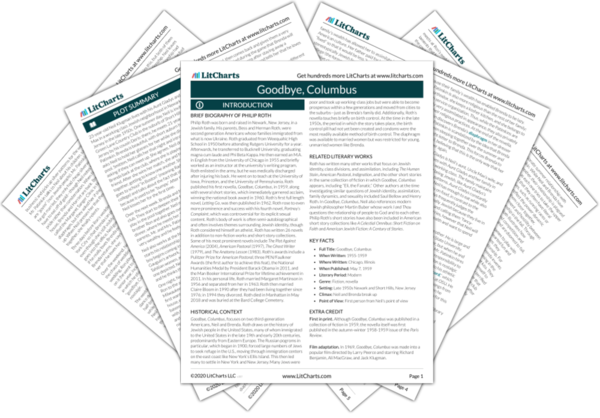Philip Roth was born and raised in Newark, New Jersey, in a Jewish family. His parents, Bess and Herman Roth, were second generation Americans whose families immigrated from what is now Ukraine. Roth graduated from Weequahic High School in 1950 before attending Rutgers University for a year. Afterwards, he transferred to Bucknell University, graduating magna cum laude and Phi Beta Kappa. He then earned an M.A. in English from the University of Chicago in 1955 and briefly worked as an instructor at the university’s writing program. Roth enlisted in the army, but he was medically discharged after injuring his back. He went on to teach at the University of Iowa, Princeton, and the University of Pennsylvania. Roth published his first novella,
Goodbye, Columbus, in 1959, along with several short stories, which immediately garnered acclaim, winning the national book award in 1960. Roth’s first full length novel,
Letting Go, was then published in 1962. Roth rose to even more prominence and success with his fourth novel,
Portnoy’s Complaint, which was controversial for its explicit sexual content. Roth’s body of work is often semi-autobiographical and often involves themes surrounding Jewish identity, though Roth considered himself an atheist. Roth has written 26 novels in addition to non-fiction works and short story collections. Some of his most prominent novels include
The Plot Against America (2004),
American Pastoral (1997),
The Ghost Writer (1979), and
The Anatomy Lesson (1983). Roth’s awards include a Pulitzer Prize for
American Pastoral, three PEN/Faulkner Awards (the first author to achieve this feat), the National Humanities Medal by President Barack Obama in 2011, and the Man Booker International Prize for lifetime achievement in 2011. In his personal life, Roth married Margaret Martinson in 1956 and separated from her in 1963. Roth then married Claire Bloom in 1990 after they had been living together since 1976; in 1994 they divorced. Roth died in Manhattan in May 2018 and was buried at the Bard College Cemetery.
